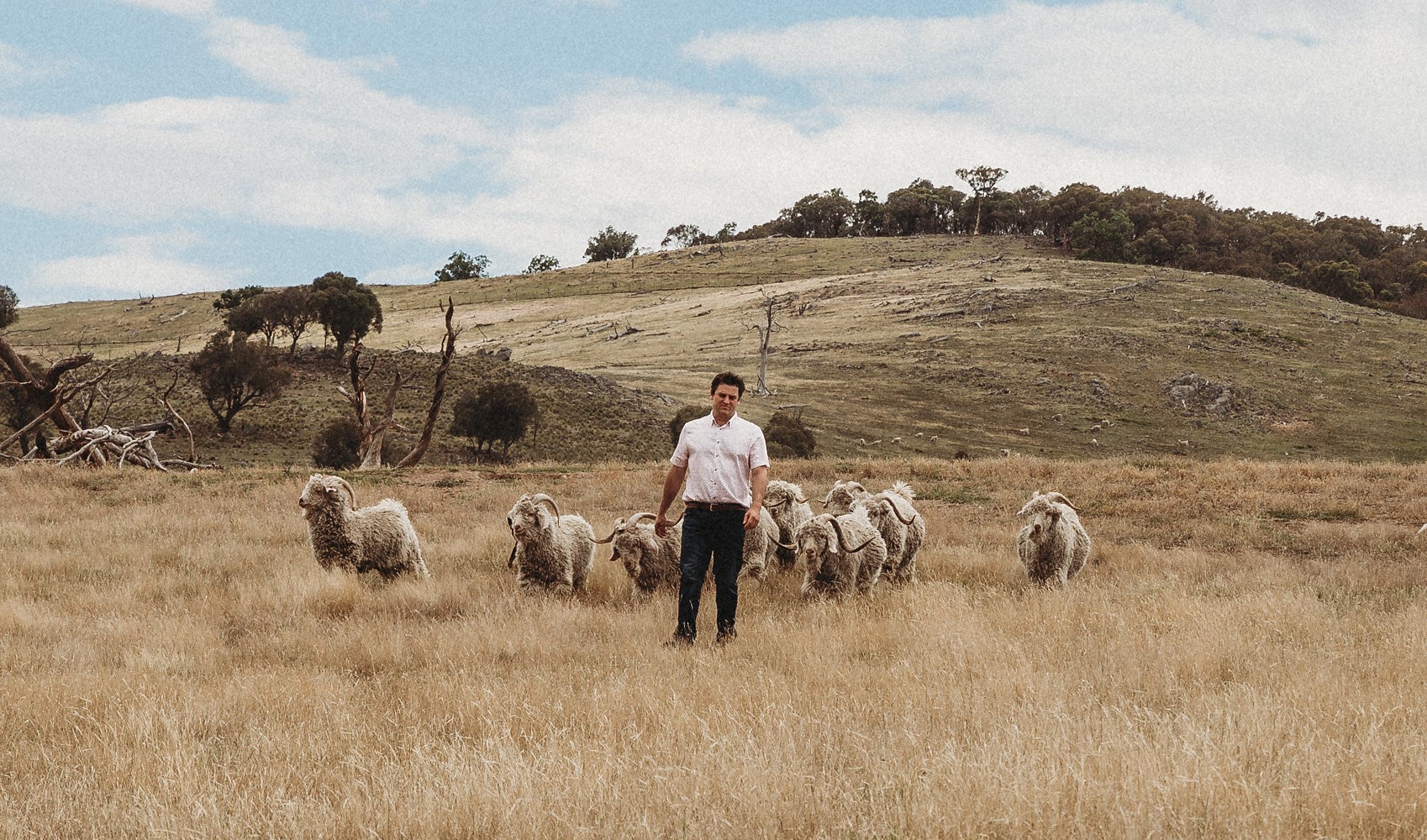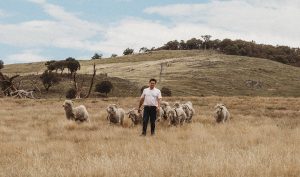A mohair suit isn’t cheap. At a cost of around $4,000, it’s a celebration suit and one a buyer expects to last for more than a season. Increasingly, too, those buyers want to know the story behind that beautiful shine and to be assured the animals, farms and workers involved in the suit’s journey were all kindly and sustainably cared for.
South Africa, the world’s largest mohair producer, has established a framework of sustainability benchmarks so they can provide those assurances. As a result, Australia is making sure it won’t be left behind with ambitious plans to ensure it meets customer demands by following sustainability standards, whether national or international, “by the end of the next clip”.
Mohair in Australia is a minnow compared to the whale that is wool. Few farmers have more than 1000 goats and the industry only produces 50 – 60 tonnes of mohair a year. However, says Nick Gorrie, President of Mohair Australia Ltd, who runs 700 animals on his 375-acre stud in the Hills of Hall region just outside the ACT border, it’s a market that can grow.
“We have an ageing farmer population in the angora goat business and this new approach will help us explain to younger farmers why they may be well suited to angoras, especially on those intergenerational mixed farms with four or five children taking over different parts of the enterprise. It will provide them with a valuable framework in which to do business.”
It’s not just the ethics that will appeal, he continues, showing the international markets that Australian mohair is produced in a sustainable manner can boost premiums by up to 15 per cent. Recently, adds Nick, a German buyer bought mohair at three times the normal price. “It was superior mohair, but we leveraged the new SDGs (Sustainable Development Goals) as part of the sale.”
Potentials and pitfalls
That’s why he’s feeling excited as the industry begins working through the AgriFutures Australia commissioned report Australian Sustainable Goat Fibre Production: Guidelines and begins discussions on potential benchmarks.
“The fashion brands and mohair buyers do want a level of certification, so we need to think about how to provide that,” explains Nick. “But first we need a base framework, which these guidelines provide.”
The report was produced by Schuster Consulting Group. Angela and Peter Schuster have spent the past ten years working in the SDGs space and are clear about the potentials and pitfalls.
“The United Nations SDGs do seem to be the way the world is moving and it’s important not to get left behind,” says Angela. “However, I would like to see more qualification around some of the demand we’re hearing about from customers.”
In part, Australian mohair already has that driver. South Africa is our biggest mohair market and since adopting their own sustainability program only want to buy fibre from those with similar programs in place. However, because the Australian industry is comparatively small it must be smart, advises Peter. “Mohair producers have to work out the cost of the next steps and clearly define the market opportunity and the driver for it.”
Peter says, given the Australian mohair industry is already in the LPA (Livestock Production Assurance) program and NLIS (National Livestock Identification System), it may be that the Australian industry is already doing what is required by the market in terms of SDGs.
If, however, the market requires more, such as third party specifications or adherence to specific standards, establishing these standards and then auditing them is likely to be expensive and growers will have to do a cost benefit analysis.
Weighing up the balance
“As an example, if mohair sells for $40 a kilo if you’re part of a program and $20 if you’re not, but it costs $30 a kilo to be part of the program, you’re arguably better off not being in the program,” says Peter. “However, if you don’t have a market because you aren’t in a program, then you may have to go down this pathway.”
“The mohair industry will need to get together to work out what’s best for their members and not just a minority of large growers. It will need more research.”










